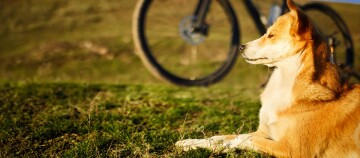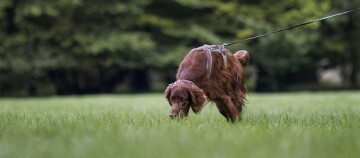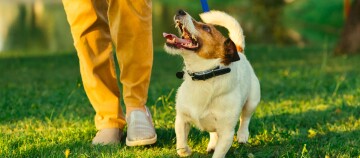Keeping Dogs Busy and Exercising Them in a Manner Appropriate to Their Species
06.01.2024 - Reading time: 6 minutes
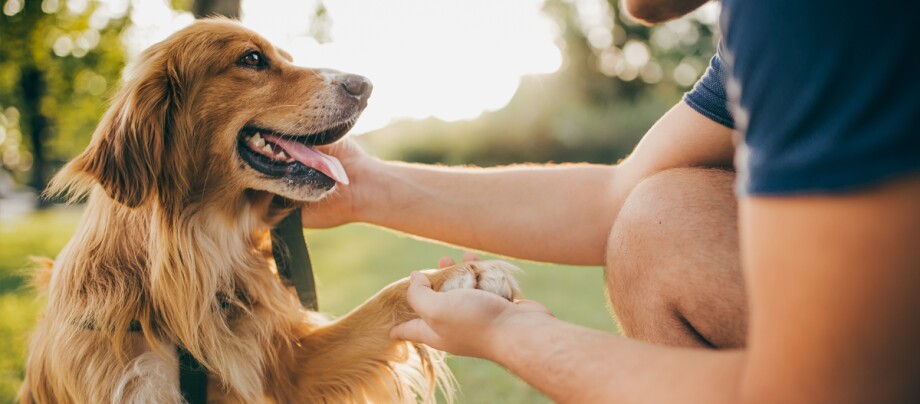
As a committed dog owner, you'll stumble again and again across the two terms “keeping your dog occupied in a breed-appropriate way” and “exercise for dogs”. This is usually followed by a multitude of activity options for four-legged friends. But which of these are the right ones for your dog? And what does that actually mean? That's exactly what you'll find out here.
- What do keeping your dog occupied in a breed-appropriate way and exercise mean?
- How do you exercise your dog mentally?
- What is the right physical exercise?
- How do you implement social exercise?
- How much breed-specific exercise does your dog need?
- How can you tell if your dog is bored or overwhelmed?
- How much time do you have to factor in?
What do keeping your dog occupied in a breed-appropriate way and exercise mean?
The terms occupied and exercise are often taken too literally in this context. It is not about keeping your dog busy until tired. The excellent term “canine enrichment” is also used for this, since it is about enriching your dog’s life, i.e. filling your dog’s everyday life with options that allow it to develop within the framework of its natural behavioural spectrum. Because practising natural behaviour is one of your dog’s basic needs.
A meaningful strategy for keeping your dog occupied is based on four pillars
Ideally, these four components mesh like cogwheels. In case this scares you off, the whole thing doesn’t have to be that complicated! On the contrary – the natural behaviour of domestic dogs includes things like running, digging, rolling around, chasing, tracking, finding food, defending territories, playing with other dogs and also sleeping long and hard. Your dog does not expect a 24/7 entertainment programme from you. What it wants from you as pack leader is that you integrate tasks into your everyday life that it can solve by itself, giving it the freedom to be a dog and within a pack in which it knows its place.
How do you exercise your dog mentally?
Dogs are curious animals that are capable of developing amazing problem-solving strategies right into old age. If we don’t encourage their cognitive abilities, they will atrophy. This is exactly what mental exercise is all about – confronting your four-legged friend with tasks that it is allowed to solve. Build small “challenges” into your dog’s daily routine. Dog games at home and in nature are just as suitable for this: nosework, fetch games, intelligence and skill games, search games, hide-and-seek games as well as any training situations that give your dog the freedom to think and choose its own actions. What’s special about dogs‘ problem-solving strategies is that they are often geared towards cooperation with humans. Dogs actively demand help from their owners and are excellent at interpreting human facial expressions and pointing gestures. That’s why it’s so much fun to play with dogs! But mental exercise is not only fun, it also keeps you and your dog mentally fit. There is evidence that regular activity and mental stimulation delay the onset of dementia-like symptoms in old age and slow down its development.
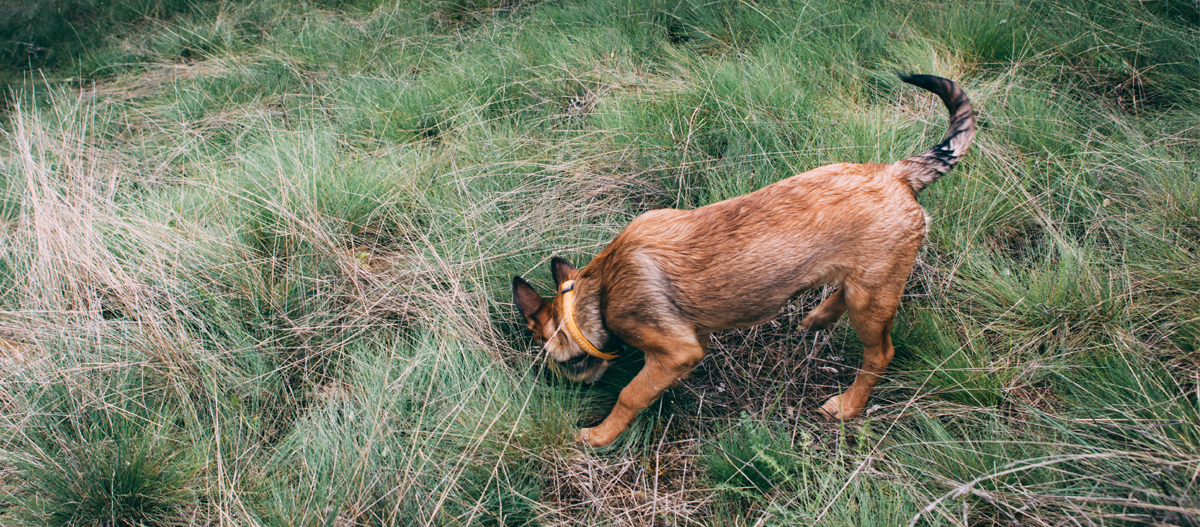
What is the right physical exercise?
Two factors determine the answer here: the state of health and the age of your four-legged friend. A common misconception is that older dogs should not be included. It’s true that you shouldn’t demand top performance from an older dog, but too little exercise causes the muscles to weaken and the joints to be insufficiently moved. It’s the right balance that matters. Because the opposite is also counterproductive – even with super fit young dogs. It is not a matter of exhausting the dog until it collapses, but of moving it in a manner appropriate to the breed. A long walk in the open air is often enough – preferably off the lead. Healthy dogs may also like to run alongside a bike or to have fun dog swimming in the cool water.
How do you implement social exercise?
A happy dog’s life includes contact with other dogs. If a second dog is not an option, it is important that your dog finds four-legged playmates in other ways. Communication and behaviour between dogs also need to be practised! If your dog spends too little time with other dogs, it may misinterpret their body language and react with fear and aggression. Tip: if you don’t know any suitable dogs in your area, it’s worth taking a look at social networks. There you will find dog groups in almost every region that meet for joint activities.
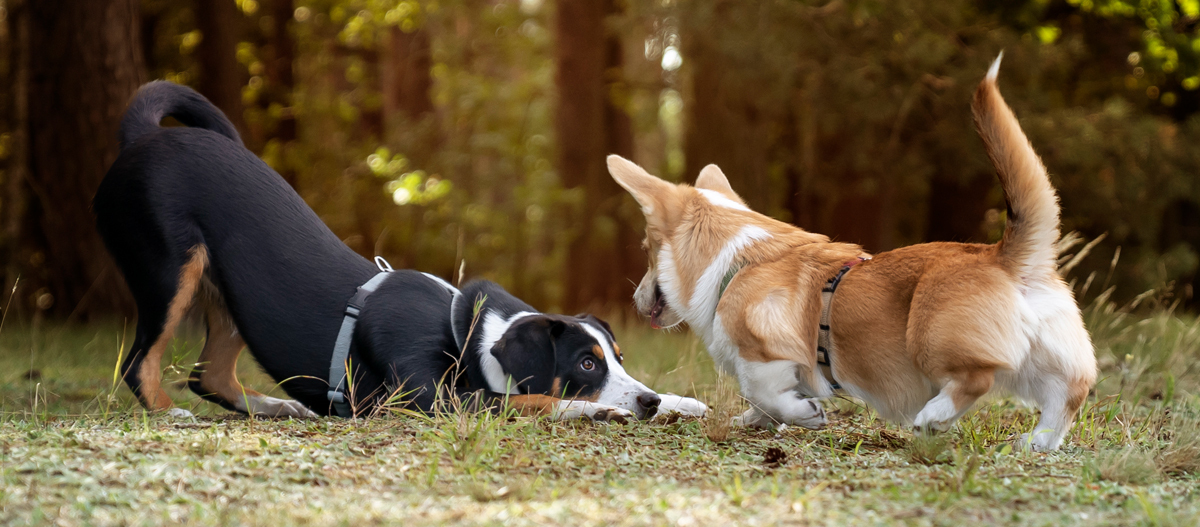
How much breed-specific exercise does your dog need?
Breed-specific exercise for your dog means activities for which it was originally bred. Since this is often not possible, it is up to you to find suitable substitutes. For example, a retriever will be happy with retrieving games such as dummy training, a husky with pulling sports and a sheepdog with a game of herding. It often helps to arrange a playdate with a dog of the same breed. Greyhounds have fun playing running games, terriers play digging games with lots of show growling and boxers love ball and tug-of-war games.
With some working breeds, it can be very difficult to find real replacement activities. Guard dogs, for example, want to independently secure a herd and territory. It is difficult to replicate this in just any scenario. In the interest of the animals, you should refrain from acquiring them if you cannot offer them a breed-appropriate life.
How can you tell if your dog is bored or overwhelmed?
If dogs get too little stimulation for their grey matter or are in a state of constant excitement due to too much action, sooner or later this will be reflected in their behaviour. Interestingly, the signs of boredom and frustration are often the same as those of overwork and overstimulation.
This behaviour indicates boredom or excessive demands:
- Your dog is hyperactive and has trouble calming down.
- It barks persistently for no reason.
- It is overly affectionate.
- It behaves impulsively, is irritable and has little patience.
- It no longer listens to your call and seeks out its own adventures.
- It licks or nibbles its paws or other body parts.
- It destroys or gnaws furniture and objects.
- It shows stereotypical behaviour, like chasing its tail.
- It is listless and seems depressed.
- It has no or excessive appetite.
- It has new fears and recovers badly after stressful situations.
Important: of course, there may also be medical reasons for these behaviours. If in doubt, always contact your vet.
How much time do you have to factor in?
A blanket answer is not possible. The needs of the individual breeds and – not to be forgotten – the individual dog’s personality are too different. It is important that you schedule fixed times in your daily routine for your four-legged companion. Three walks, totalling at least two hours, are a good start. Make room on the agenda for playtime and trust your gut. And don’t forget cuddle time either! Lazing around is high on a dog’s hobby list: your four-legged friend sleeps 12-14 hours a day. After all, your dog has to process all these experiences at some point!
Does your pet have any special hobbies that you would like to share with us?
We are always happy to see your pictures: post your favourite snapshot of your dog doing its hobby on Instagram and link to our Maxi Zoo Instagram or use the hashtag #maxizoodogs!
